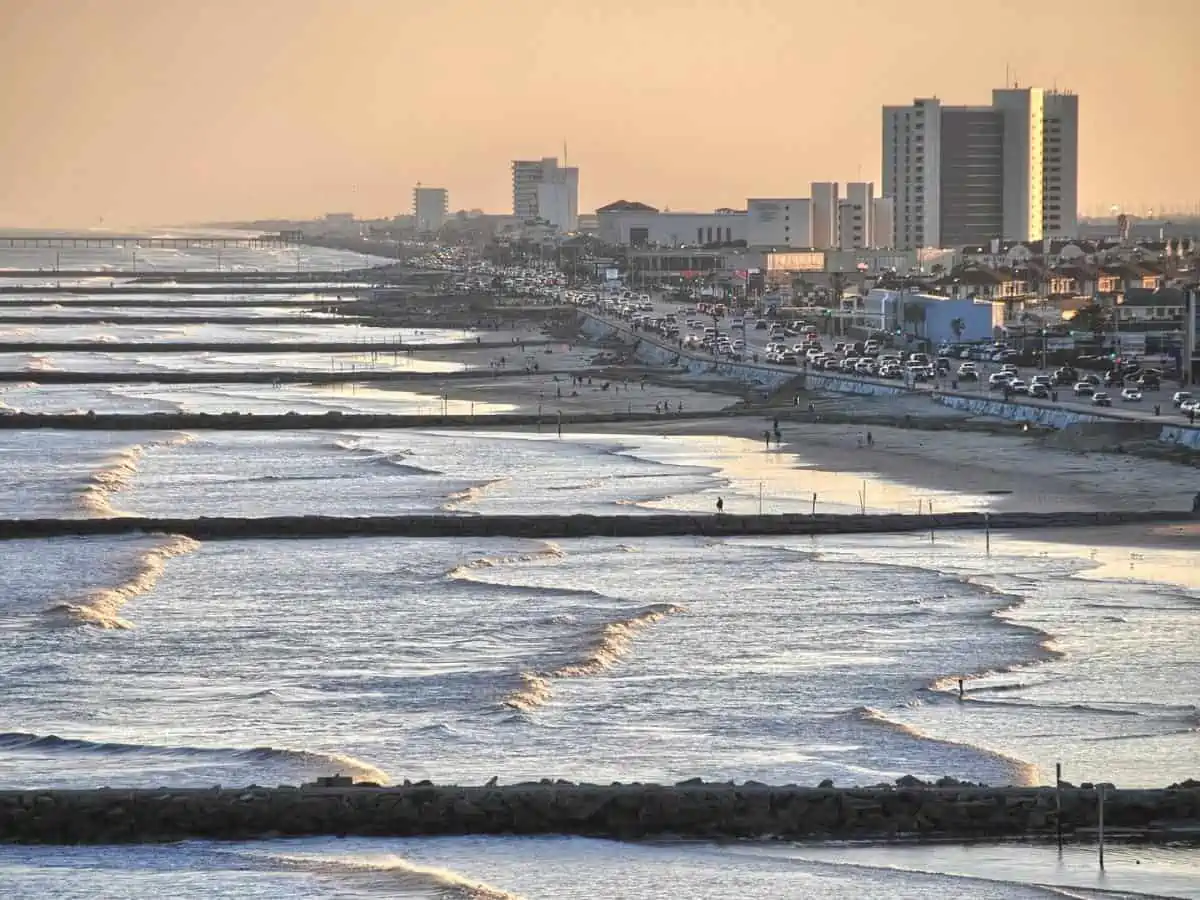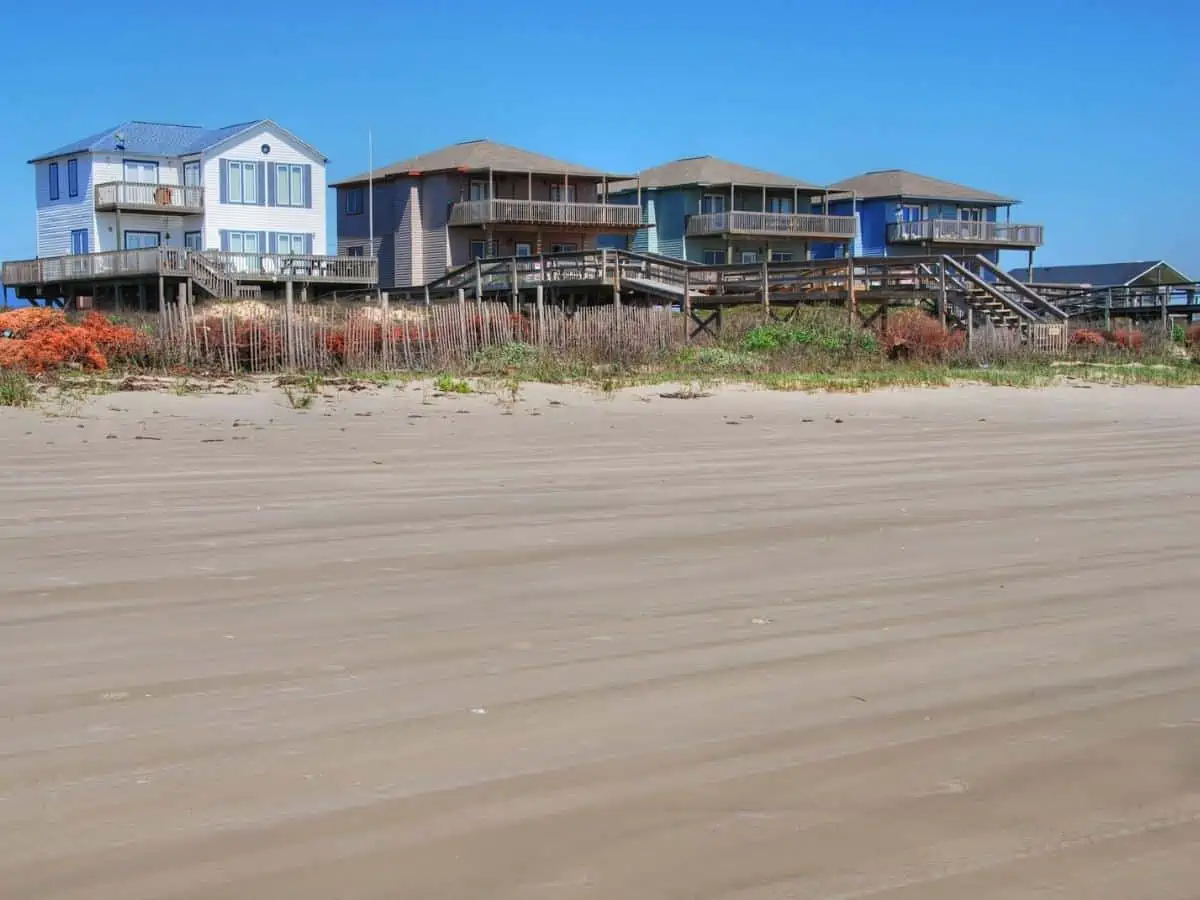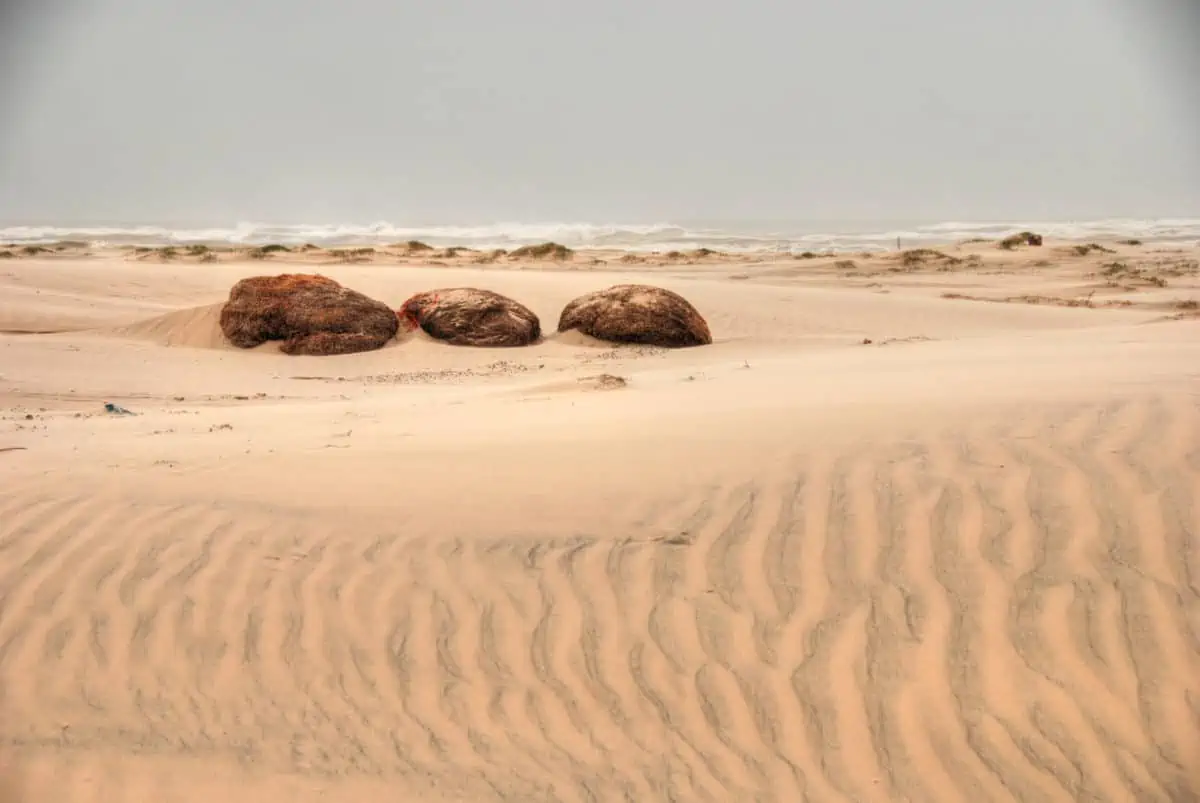Share the post "Mud to Microbes: Unpacking the Color of Texas Beaches"
Texas is a coastal state that sits across the Gulf of Mexico from sunny Florida. However, despite sharing the same waters, Texas beaches always seem brown and murky. So why are Texas beaches brown?
Texas beaches are brown because of the outflow of freshwater rivers. Most Texas beaches, including Galveston and Corpus Christi, receive a lot of water from the Trinity and Mississippi Rivers. These rivers have sediment that travels into the Gulf of Mexico, making the waters near the shoreline brown.

Why Are Texas Beaches Brown?
Texas beaches aren’t dirty and brown because of oil spills or excessive bacteria build-up. Texas beaches are brown due to a natural phenomenon caused by the freshwater coming out of America’s rivers. This freshwater hugs the coastline before it dissolves into the sea.
Essentially, Texas beaches have more freshwater than saltwater near the land. The further out you go, the more you’ll see clear, blue seawater with no river silt or mud. Here’s a breakdown of why it happens to Texas and not the other side of the Gulf.
River Outflow
When rivers meet the sea, they discharge their darker water into the ocean. Because fresh water is lighter than saltwater, it sits on top of ocean water.
It’s also much browner as the river kicks up:
- Silt
- Rocks
- Mud
An aerial view of an estuary will show a plume of brown water flowing into the ocean. However, the outflow doesn’t stop there. Depending on the river’s strength, it could take hundreds of miles before the freshwater is fully dissolved into the ocean.
The brown water from the river will discolor the coastline and ocean water until it’s gone, and this affects the beaches of Louisiana and Texas.
Three major rivers empty into the Gulf of Mexico, pushing out non-salty, brown water and turning the waters of Texas beaches dark. Although two of them aren’t even in Texas, they have a massive effect on the beaches.

The Mighty Mississippi
A major contributor to brown beaches is silt waters, the second-longest river in America and the third largest river basin in the world.
The Mississippi drains 593,003 cubic feet of water every second into the Gulf of Mexico. This water is a deep brown, as it’s churned up from the bottom of the muddy Mississippi, and headed straight for Texas beaches.
Atchafalaya Basin
Adding its silt to the waters of the Mississippi, the Atchafalaya River lets out in Eastern Louisiana. The Basin that the river winds through before hitting the ocean is one of the nation’s largest swamps and boasts:
- Bayous
- Rivers
- Lakes
- Diverse Flora and Fauna
Trinity River
Trinity River is a river and watershed that flows throughout Texas. It starts in northern Texas, winds through Dallas and the countryside, and enters the Gulf just north of Houston and Galveston.
Although Corpus Christi beaches aren’t affected by the silt in the Trinity River, Galveston beaches owe much of their brownness to this Texas original.
Winds and Currents
Of course, it’s not just that the river water is muddy. If there were no winds and currents, the silty, brown water from all three of these rivers would flow into the Gulf in a straight line, gradually disappearing without touching beaches on either side of the Gulf.
However, that’s not how it works. Because the freshwater stays on top of the salt water for a while, it’s more likely to be blown by the wind and pushed up against the coast. Instead of drifting out to sea, the lighter water hugs the coastline and turns the beaches brown along the way.
The winds affect how brown Louisiana and Texas beaches look, but currents are also to blame. Winds change, but certain currents stay the same, sweeping water from one side of the Gulf to the other.
This is why the Florida side has sparkly white beaches with clear water, while Texas and Louisiana waters look brown.

Ocean Water
Water is naturally clear as it simply reflects whatever’s inside it or (if it looks especially blue) the sky above. Brown water has dirt or silt in it, and green water likely has algae.
Ocean water is usually a more blue or green color, while river water is brown. Occasionally, a beach day at Galveston or Corpus Christi will result in clear blue seas.
This isn’t because the water has stopped flowing from rivers. It’s just a fluke due to a change in the wind and the underlying ocean currents.
Remember, ocean water is heavier than freshwater. While the freshwater sits on top and gradually mixes in, the saltwater is still there underneath. That’s why when you taste the waters on a Texas beach, they still taste salty.
Sometimes, the water flips, and the clearer ocean water comes to the top, pushing the freshwater down and out to sea. The beach has blue waters for a few hours or days instead of brown. It doesn’t mean the water’s any cleaner, but it does look nice!
Other Causes of Sediment
While the most common cause of brown beach water is the sediment from rivers and estuaries, there are other ways that the water becomes browner.
Heavy rainfalls can release more sediment from the land, making the beaches darker. However, this is a natural occurrence and gets absorbed quickly.
Of course, a natural disaster such as Hurricane Harvey will release much more sediment. The 2017 hurricane released over 18 years’ worth of sediment, causing the beaches to be a much darker hue. It can take several years for the water to naturally absorb so much extra sediment.
Other issues that result in brown water include:
- Pollution
- Erosion
- Oil spills
Although oil spills aren’t the cause of the brown beaches of Texas, they do affect the health of the water and the creatures who live in the Gulf. Conservations are attempting to preserve the natural order of sediment without dumping too much into the water.
References:
- Where the Rivers Meet the Sea
- Mississippi River Facts
- Hurricane Harvey & Its Impacts on Southeast Texas
- Galveston Beaches
- Trinity River
- The Atchafalaya Basin
Share the post "Mud to Microbes: Unpacking the Color of Texas Beaches"
Christian Linden is a seasoned writer and contributor at Texas View, specializing in topics that resonate with the Texan community. With over a decade of experience in journalism, Christian brings a wealth of knowledge in local politics, culture, and lifestyle. He holds a Bachelor's degree in Communications from the University of Texas. When he's not writing, Christian enjoys spending weekends traveling across Texas with his family, exploring everything from bustling cities to serene landscapes.











